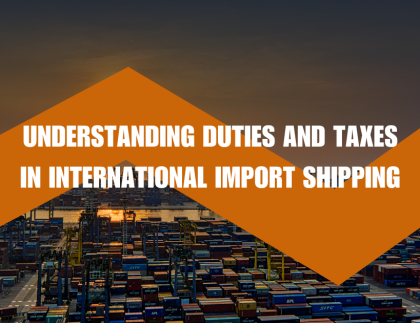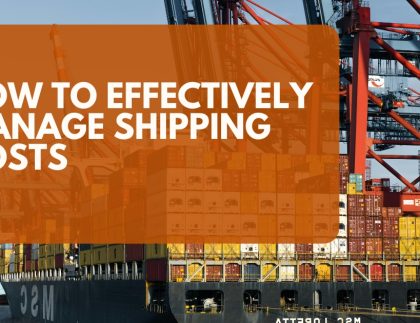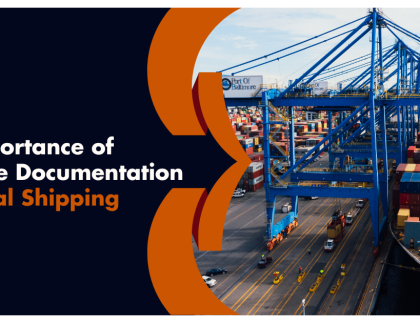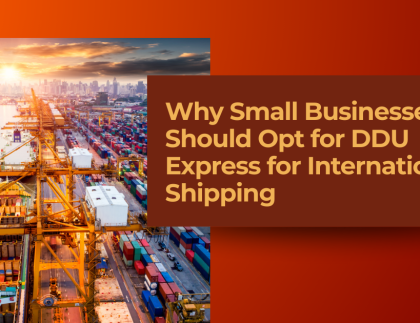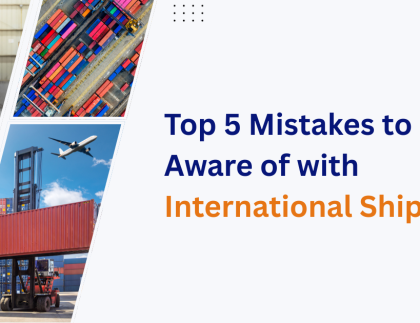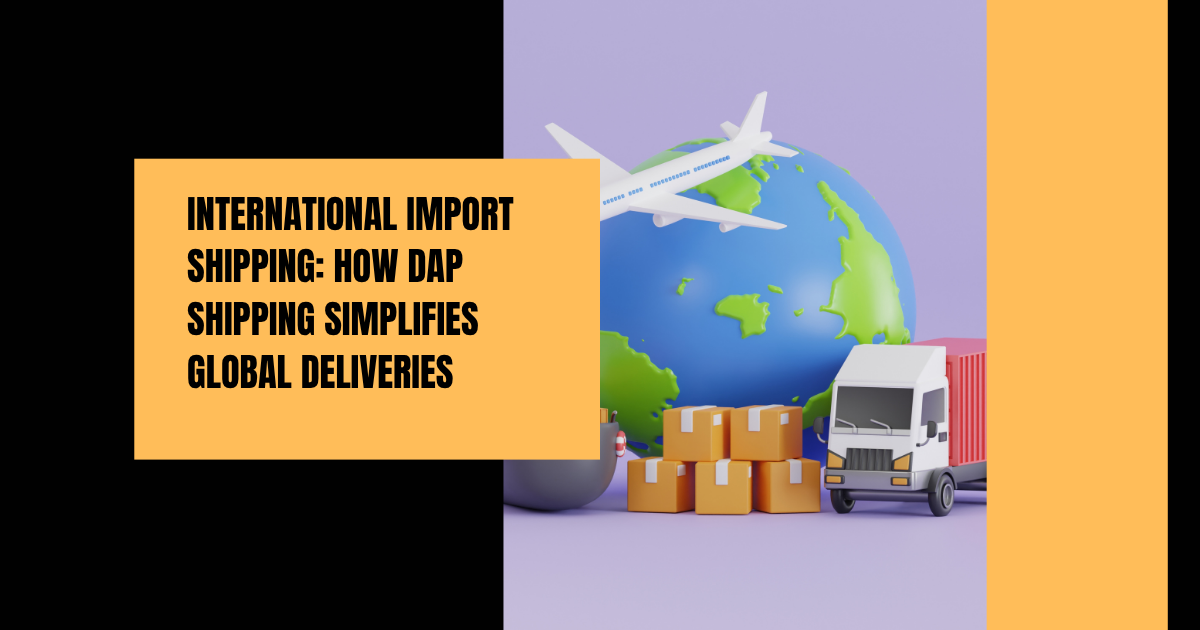
Introduction
Businesses rely heavily on international import shipping to bring in products and materials from overseas suppliers against the backdrop of global trade’s frenetically increasing pace. While importing opens new vistas, the challenges it presents-customs clearance, duties, and shipping responsibilities-are met head-on by businesses.
That’s where DAP shipping comes in-or Delivered at Place. It’s a popular international shipping term that helps importers simplify logistics while maintaining control over costs and delivery timelines.
What is International Import Shipping?
International import shipping refers to the transportation of goods from one country to another, usually for import purposes. The process entails several key steps in the entire operation, including:
- Supplier coordination and packaging
- Freight forwarding and transport
- Customs clearance and duty payment
- Final delivery to the importer’s destination
Efficient handling of these steps ensures that your goods reach on time and in perfect condition, no matter where they are coming from.
Understanding DAP Shipping in International Imports
DAP means delivered at place, which is included in the category of Incoterms used in international trade. According to this term, it involves the seller’s responsibility to deliver goods to the country of the buyer’s destination, including all transportation and export formalities. In contrast, import customs clearance, duties, and local taxes are handled by the buyer.

Of all these, DAP shipping manages to balance cost control with responsibility sharing and is one of the most preferred options in international import shipping.
Benefits of Using DAP Shipping for Imports
- Simple logistics: Most of the shipping is handled by sellers, lowering the complexity for the buyer.
- Predictable Costs: The buyers pay the duties and taxes directly. This gives them cost transparency.
- Faster Transit Time: Because sellers arrange international freight, shipments move more efficiently.
- Ideal for global e-commerce: DAP is ideal for online retailers that import in bulk or high-value items.
Example of DAP Shipping in Action
Suppose you are an importer in India, importing electronics from China. According to DAP shipping, your Chinese supplier:
- Arranges freight and export clearance
- Ships the goods to your local port or warehouse
- Hands over the documents for customs clearance.
You, as the importer, only need to:
- Pay customs duties, GST, and other local taxes.
- Collect your goods after clearance
This process allows for an easy import experience and shared responsibility by both the importing and exporting parties.
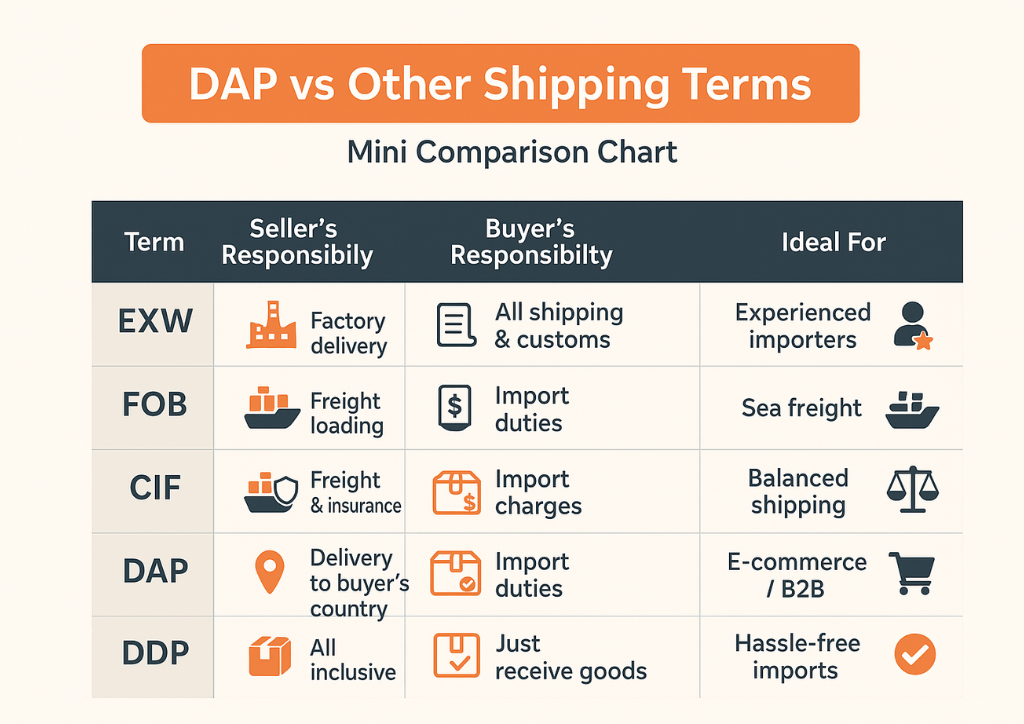
How to Efficiently Manage International Import Shipping
To maximize the effectiveness of DAP shipping and further simplify your import process:
- Partner with a reliable logistics provider or freight forwarder.
- Keep informed about the customs regulations in your country:
- Get detailed shipping quotes to avoid hidden costs.
- Use real-time tracking tools to enable better shipment visibility.
Pro Tip: If you want to offer an even smoother delivery experience for your customers, consider DDP shipping (Delivered Duty Paid) — where the seller covers all customs and taxes too.
Conclusion
International import shipping does not have to be complicated. By choosing the right Incoterm, such as DAP shipping, importers can balance convenience and control with cost-effectiveness. It’s a reliable choice for businesses seeking smoother global trade without the burden of export logistics. Whether importing goods into your e-commerce store or arranging bulk shipments, DAP shipping helps move the products across borders efficiently and confidently.



